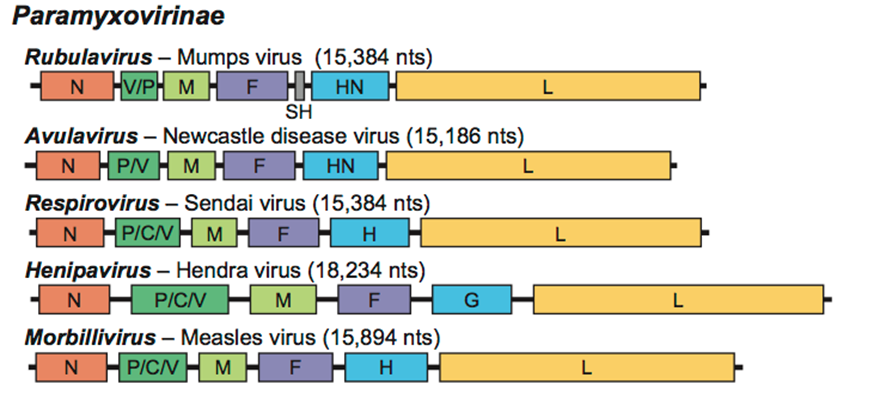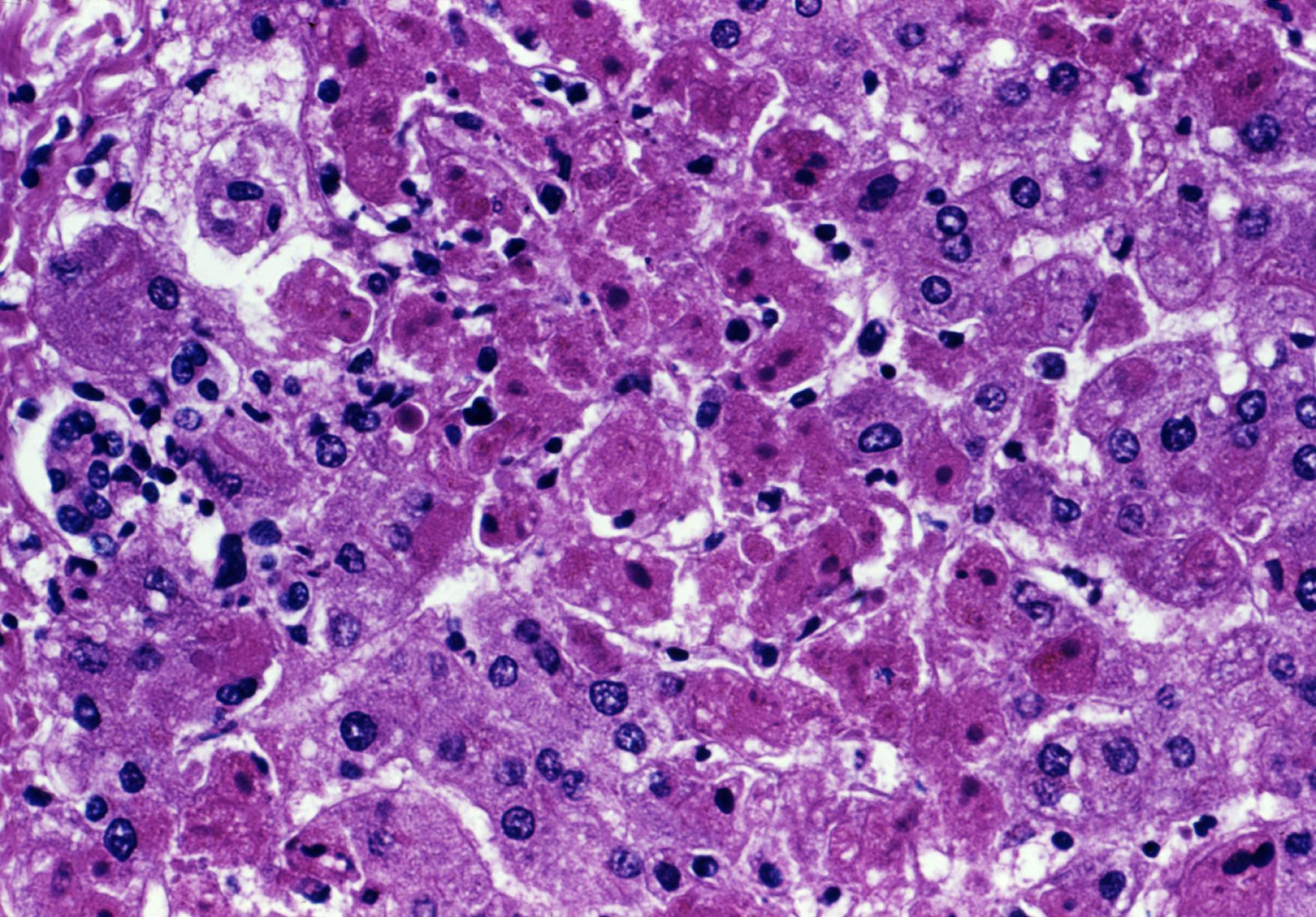|
Sosuga Rubulavirus
''Sosuga pararubulavirus'' is a species of Paramyxovirus which is transmissible to humans. The Egyptian fruit bat is thought to be a natural reservoir species for the virus. History In August 2012, following a six-week field trip to South Sudan and Uganda to collect bats and rodents, an American wildlife biologist became ill with symptoms including fever, malaise, headache, pain, stiffness in the neck, and a sore throat. Upon her return to the US, she was admitted to hospital, where she soon developed a maculopapular rash and oropharyngeal ulceration. Several suspect infections, including Ebola and Marburg Marburg ( or ) is a university town in the German federal state (''Bundesland'') of Hesse, capital of the Marburg-Biedenkopf district (''Landkreis''). The town area spreads along the valley of the river Lahn and has a population of approx ..., were ruled out through standard diagnostic testing. Genetic sequencing identified a novel virus. To determine the source, ... [...More Info...] [...Related Items...] OR: [Wikipedia] [Google] [Baidu] |
Paramyxoviridae
''Paramyxoviridae'' (from Greek ''para-'' “by the side of” and ''myxa'' “mucus”) is a family of negative-strand RNA viruses in the order '' Mononegavirales''. Vertebrates serve as natural hosts. Diseases associated with this family include measles, mumps, and respiratory tract infections. The family has four subfamilies, 17 genera, and 78 species, three genera of which are unassigned to a subfamily. Structure Virions are enveloped and can be spherical or pleomorphic and capable of producing filamentous virions. The diameter is around 150 nm. Genomes are linear, around 15kb in length. Fusion proteins and attachment proteins appear as spikes on the virion surface. Matrix proteins inside the envelope stabilise virus structure. The nucleocapsid core is composed of the genomic RNA, nucleocapsid proteins, phosphoproteins and polymerase proteins. Genome The genome is nonsegmented, negative-sense RNA, 15–19 kilobases in length, and contains six to 10 genes. Extraci ... [...More Info...] [...Related Items...] OR: [Wikipedia] [Google] [Baidu] |
Egyptian Fruit Bat
The Egyptian fruit bat or Egyptian rousette (''Rousettus aegyptiacus'') is a species of megabat that is found in Africa, the Middle East, the Mediterranean, and the Indian subcontinent. It is one of three ''Rousettus'' species with an African-Malagasy range, though the only species of its genus found on continental Africa. The common ancestor of the three species colonized the region in the late Pliocene or early Pleistocene. The species is traditionally divided into six subspecies. It is considered a medium-sized megabat, with adults weighing and possessing wingspans of approximately . Individuals are dark brown or grayish brown, with their undersides paler than their backs. The Egyptian fruit bat is a highly social species, usually living in colonies with thousands of other bats. It, along with other members of the genus ''Rousettus'', are some of the only fruit bats to use echolocation, though a more primitive version than used by bats in other families. It has also develop ... [...More Info...] [...Related Items...] OR: [Wikipedia] [Google] [Baidu] |
South Sudan
South Sudan (; din, Paguot Thudän), officially the Republic of South Sudan ( din, Paankɔc Cuëny Thudän), is a landlocked country in East Africa. It is bordered by Ethiopia, Sudan, Central African Republic, Democratic Republic of the Congo, Uganda and Kenya. Its population was estimated as 12,778,250 in 2019. Juba is the capital and largest city. It gained independence from Sudan on 9 July 2011, making it the most recent sovereign state or country with widespread recognition as of 2022. It includes the vast swamp region of the Sudd, formed by the White Nile and known locally as the '' Bahr al Jabal'', meaning "Mountain River". Sudan was occupied by Egypt under the Muhammad Ali dynasty and was governed as an Anglo-Egyptian condominium until Sudanese independence in 1956. Following the First Sudanese Civil War, the Southern Sudan Autonomous Region was formed in 1972 and lasted until 1983. A second Sudanese civil war soon broke out in 1983 and ended in 2005 with ... [...More Info...] [...Related Items...] OR: [Wikipedia] [Google] [Baidu] |
Uganda
}), is a landlocked country in East Africa. The country is bordered to the east by Kenya, to the north by South Sudan, to the west by the Democratic Republic of the Congo, to the south-west by Rwanda, and to the south by Tanzania. The southern part of the country includes a substantial portion of Lake Victoria, shared with Kenya and Tanzania. Uganda is in the African Great Lakes region. Uganda also lies within the Nile basin and has a varied but generally a modified equatorial climate. It has a population of around 49 million, of which 8.5 million live in the capital and largest city of Kampala. Uganda is named after the Buganda kingdom, which encompasses a large portion of the south of the country, including the capital Kampala and whose language Luganda is widely spoken throughout the country. From 1894, the area was ruled as a protectorate by the United Kingdom, which established administrative law across the territory. Uganda gained independence from the UK on 9 Oc ... [...More Info...] [...Related Items...] OR: [Wikipedia] [Google] [Baidu] |
Maculopapular Rash
A maculopapular rash is a type of rash characterized by a flat, red area on the skin that is covered with small confluent bumps. It may only appear red in lighter-skinned people. The term "maculopapular" is a compound: ''macules'' are small, flat discolored spots on the surface of the skin; and ''papules'' are small, raised bumps. It is also described as erythematous, or red. This type of rash is common in several diseases and medical conditions, including scarlet fever, measles, Ebola virus disease, rubella, secondary syphilis (Congenital syphilis, which is asymptomatic, the newborn may present this type of rash), erythrovirus (parvovirus B19), chikungunya (alphavirus), zika, smallpox (which has been eradicated), varicella (when vaccinated persons exhibit symptoms from the modified form), heat rash, and sometimes in Dengue fever. It is also a common manifestation of a skin reaction to the antibiotic amoxicillin or chemotherapy drugs. Cutaneous infiltration of leukemic cell ... [...More Info...] [...Related Items...] OR: [Wikipedia] [Google] [Baidu] |
Oropharyngeal
The pharynx (plural: pharynges) is the part of the throat behind the mouth and nasal cavity, and above the oesophagus and trachea (the tubes going down to the stomach and the lungs). It is found in vertebrates and invertebrates, though its structure varies across species. The pharynx carries food and air to the esophagus and larynx respectively. The flap of cartilage called the epiglottis stops food from entering the larynx. In humans, the pharynx is part of the digestive system and the conducting zone of the respiratory system. (The conducting zone—which also includes the nostrils of the nose, the larynx, trachea, bronchi, and bronchioles—filters, warms and moistens air and conducts it into the lungs). The human pharynx is conventionally divided into three sections: the nasopharynx, oropharynx, and laryngopharynx. It is also important in vocalization. In humans, two sets of pharyngeal muscles form the pharynx and determine the shape of its lumen. They are arranged as ... [...More Info...] [...Related Items...] OR: [Wikipedia] [Google] [Baidu] |
Ulceration
An ulcer is a discontinuity or break in a bodily membrane that impedes normal function of the affected organ. According to Robbins's pathology, "ulcer is the breach of the continuity of skin, epithelium or mucous membrane caused by sloughing out of inflamed necrotic tissue." Common forms of ulcers recognized in medicine include: * Ulcer (dermatology), a discontinuity of the skin or a break in the skin. ** Pressure ulcers, also known as bedsores ** Genital ulcer, an ulcer located on the genital area ** Ulcerative dermatitis, a skin disorder associated with bacterial growth often initiated by self-trauma ** Anal fissure, a.k.a. an ulcer or tear near the anus or within the rectum ** Diabetic foot ulcer, a major complication of the diabetic foot * Corneal ulcer, an inflammatory or infective condition of the cornea * Mouth ulcer, an open sore inside the mouth. ** Aphthous ulcer, a specific type of oral ulcer also known as a canker sore * Peptic ulcer, a discontinuity of the gastr ... [...More Info...] [...Related Items...] OR: [Wikipedia] [Google] [Baidu] |
Ebola Virus Disease
Ebola, also known as Ebola virus disease (EVD) and Ebola hemorrhagic fever (EHF), is a viral hemorrhagic fever in humans and other primates, caused by ebolaviruses. Symptoms typically start anywhere between two days and three weeks after becoming infected with the virus. The first symptoms are usually fever, sore throat, muscle pain, and headaches. These are usually followed by vomiting, diarrhoea, rash and decreased liver and kidney function, at which point, some people begin to bleed both internally and externally. The disease kills between 25% and 90% of those infected – about 50% on average. Death is often due to shock from fluid loss, and typically occurs between six and 16 days after the first symptoms appear. Early treatment of symptoms increases the survival rate considerably compared to late start. The virus spreads through direct contact with body fluids, such as blood from infected humans or other animals, or from contact with items that have recently ... [...More Info...] [...Related Items...] OR: [Wikipedia] [Google] [Baidu] |
Marburg Virus Disease
Marburg virus disease (MVD; formerly Marburg hemorrhagic fever) is a viral hemorrhagic fever in humans and primates caused by either of the two Marburgviruses: Marburg virus (MARV) and Ravn virus (RAVV). Its clinical symptoms are very similar to those of Ebola virus disease (EVD). Egyptian fruit bats are believed to be the normal carrier in nature and Marburg virus RNA has been isolated from them. Signs and symptoms The most detailed study on the frequency, onset, and duration of MVD clinical signs and symptoms was performed during the 1998–2000 mixed MARV/RAVV disease outbreak. A maculopapular rash, petechiae, purpura, ecchymoses, and hematomas (especially around needle injection sites) are typical hemorrhagic manifestations. However, contrary to popular belief, hemorrhage does not lead to hypovolemia and is not the cause of death (total blood loss is minimal except during labor). Instead, death occurs due to multiple organ dysfunction syndrome (MODS) due to fluid redistr ... [...More Info...] [...Related Items...] OR: [Wikipedia] [Google] [Baidu] |





